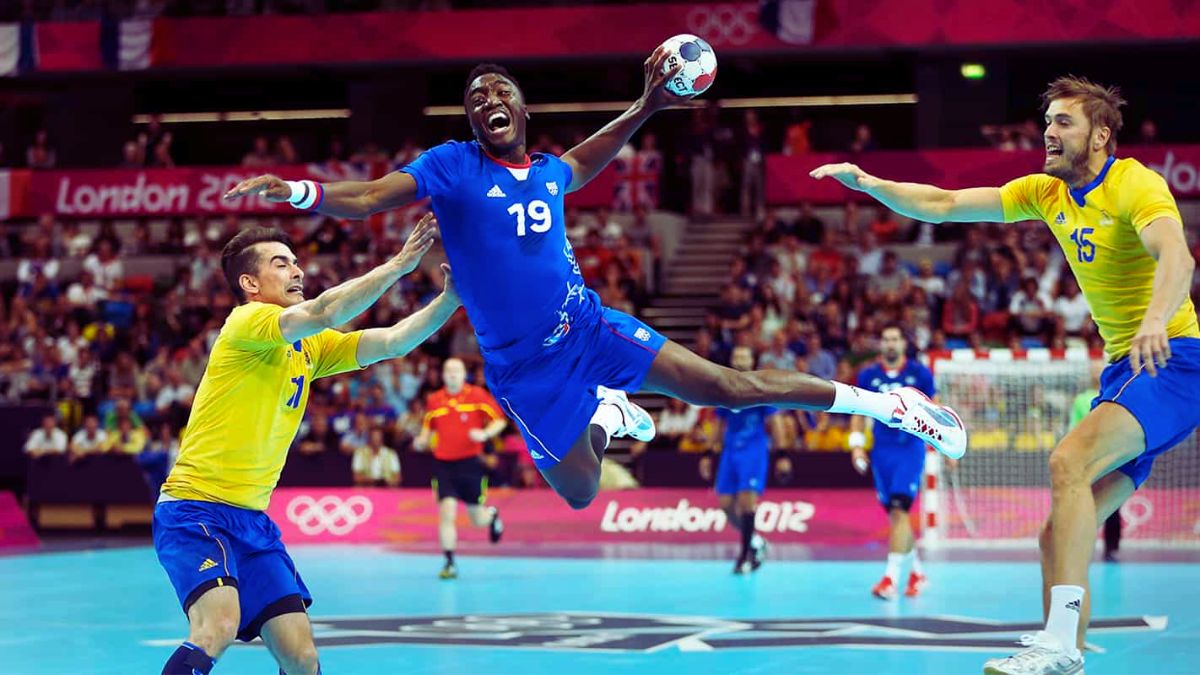Handball is a thrilling and fast paced team sport that combines elements of Football, basketball, and ice hockey and has gained global popularity. To fully grasp the game, it is essential to understand the rules and court measurements. In this comprehensive article, we will delve into the intricacies of handball rules and the precise dimensions of the court.
Handball Rules:
- Players and Positions: A handball team consists of seven players, including a goalkeeper. These players are divided into two lines: three in the back court and three in the front court. Player positions can be interchanged during the game.
- Objective: The primary aim in handball is to score goals by throwing the ball into the opponent’s net. The team with the highest number of goals at the end of the game emerges victorious.
- Dribbling and Movement: Handball players can dribble, pass, or shoot the ball. However, a player can only take three steps without dribbling. After three steps, the player must either pass, shoot, or bounce the ball. Failure to do so results in a turnover.
- Contact: While physical contact is allowed in handball, excessive or dangerous contact is strictly prohibited. Defending players must maintain a minimum distance of one meter from the player in possession of the ball.
- Fouls and Penalties: Various fouls can occur during a handball match, such as holding, pushing, or tripping an opponent. When a foul is committed, the opposing team is awarded either a free throw or a penalty shot, depending on the severity of the offense.
- Time and Duration: A standard handball match consists of two halves, each lasting 30 minutes, with a halftime break of 10-15 minutes. In case of a tie at the end of the game, overtime or a penalty shootout may be used, depending on the competition rules.
- Substitutions: Handball allows substitutions, enabling players to freely enter or exit the court through designated substitution areas.
Also Read: Handball Game, Rules, Facts & Equipment | Handball History In India
Handball Court Measurements:
The handball court possesses specific measurements that contribute to the dynamics and intensity of the game. Let’s explore the key dimensions:
- Court Length: The length of a handball court spans 40 meters (131.2 feet) from one goal line to the other.
- Court Width: The width of the court measures 20 meters (65.6 feet). The playing area is divided into two halves by a center line.
- Goal Area: Each end of the court features a goal area, extending six meters (19.7 feet) from the goal line into the court. Only the goalkeeper is permitted inside this area, and attacking players must not interfere with the goalkeeper’s movements.
- Goal Size: Handball goals are three meters (9.8 feet) in height and two meters (6.6 feet) in width.
- 7-Meter Line: Positioned in front of each goal, the 7-meter line represents the penalty line. Penalty shots are taken from this line as a consequence of specific fouls.
- Free-Throw Line: This line is utilized for free throws, which are awarded to the opposing team following minor fouls or violations.
- Substitution Area: Located on both sides of the center line, the substitution area is where players enter or exit the court during substitutions.
Passive Play:
Every outfield player cannot pass the ball without an intention to shoot or attack towards the goal. In simple words, you have to pass the ball without your opponents knowing you are going to pass. If the referee recognizes the tendency of Passive play, a warning sign is shown and free throw is awarded to the opposing team.
Penalty Cards:
Handball consists of 3 Cards – Yellow, Red and Blue.
A Yellow card is shown when a player commits a serious foul and it is indicated as a Warning for the Offender.
The Red card can also come into effect when a player receives Three 2-minute suspensions from the referee.If a Red card is shown to a player then it will mean that the player is now not allowed to participate in the game anymore.
The Blue card indicates straight disqualification and that strict actions will be taken against the Offender.





